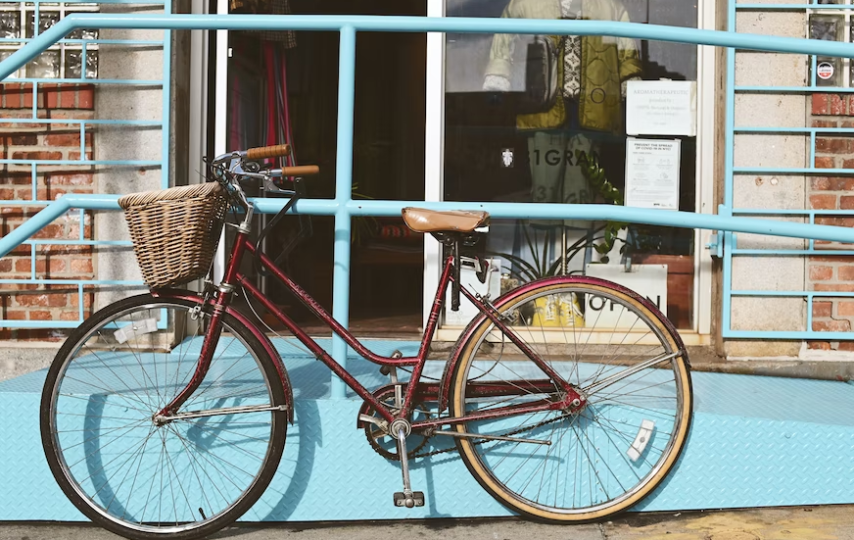Bikes have been popular and widely used for a long time, and for a good reason: they’re fun, efficient, and environmentally friendly. However, you might want more than just a plain old bike. Maybe you want to ride longer distances without burning out your legs, or you want to get on the road faster without pedaling at full speed. Or perhaps you want the added boost of an electric motor!
Luckily, there are different options available for e-bikes—and this guide will help answer all your questions about what they are and how they work. In answering these questions, we’ll also dig deeper into other crucial questions on this matter. If you’re ready, read on!
What is an e-bike?
An e-bike is an electric bike that has a motor. Most people think of an electric bike as any pedal-assisted bike, but that’s not true. The most crucial distinction between an e-bike and other types of bicycles is the presence of a motor. Electric bikes are not allowed on bike trails and paths, in bike lanes, or anywhere else where riding on public streets is prohibited.
In most cases, an electric bicycle must be registered with state and local law enforcement agencies before you can use and drive it legally on public roads or shared use paths within city limits. In many states, registration requires proof of ownership (title), insurance coverage (liability/medical coverage), an annual safety inspection by a certified mechanic, and government-issued photo identification such as a driver’s license or passport.
How does an e-bike work?
The e-bike has a battery, which powers a motor. The battery is charged by pedaling. You can switch on the motor when you want to go faster, providing extra power to the pedals. If riding uphill, you can switch off the motor and pedal as normal if you don’t want it to help your climb.
What are the benefits of biking with an electric motor?
For those with physical limitations, e-bikes are a great way to enjoy the benefits of biking without worrying about physical strain. When riding an e-bike, you don’t need to worry about sweating because the bike does all the work for you. So you can get your e-bikes now.
If you want to start biking but don’t want to put in a lot of effort or sweat, an electric bike might be right for you!
Can I take my e-bike on a train or bus?
Yes, you can. However, there might be some rules and regulations you must be aware of when transporting your motorcycle on public vehicles. For example, most buses in Los Angeles have a maximum weight limit of 55 pounds. If you’re carrying a folding bike, its wheels shouldn’t exceed 20 inches. Trains generally have a maximum weight limit of between 200 and 230 pounds, depending on the type of train.
Additionally, if your bike doesn’t fit under the seat in front of you while seated, it may be considered luggage rather than an extension of yourself like other passengers with folding bikes might think it to be. In this case, you’ll have to check in with the conductor before boarding so they can board the bicycle safely onto their vehicle with either straps or hooks (depending on how heavy it is).
Most importantly, though: make sure that wherever you’re riding has room for two wheels and hopefully brakes before taking off from home!
Can I use an e-bike to commute to work?
Remember that each US state has different laws regarding e-bike use. In California, for example, you need to be at least 16 years old and have a license to ride a Type 3 e-bike. The same is true for states like New York and Colorado.
Suppose your state has no regulations regarding performance electric bike use. In that case, it’s probably best to observe caution by following the safety rules laid out by local law enforcement officers and transportation departments.
Regardless of where you live or what rules apply there, it’s common sense that an e-bike isn’t meant for commuting purposes alone. It’s primarily designed for recreational purposes. And unless your commute is short enough and pedaling won’t take up too much time from getting ready for work or school each day, try a different mode of transportation. In this case, using e-bikes as a primary transportation mode can be risky at best and dangerous at worst.
Image source: Unsplash
Do e-bikes come in different sizes?
Yes! Depending on your height and weight, you may need to choose a different e-bike. The size of the e-bike is determined by the battery and motor, as well as how much power they produce. Because the stronger your battery and motor are, the heavier they will be in relation to their wattage (the total amount of energy they can put out). For example, a 250W motor with a 20Ah battery will likely weigh more than a 250W motor with a 35Ah battery because it has less juice.
Do I need a license to ride an electric bike?
The short answer is this: it depends on the state. In some states, you’ll need a driver’s license to ride an electric bike. About 75% of the US states adapted to a classified e-bike system wherein they tagged these vehicles into tiers depending on motor size, speed, and presence of throttle.
In some states like Rhode Island, Alaska, and New Mexico, you might be asked to get a license before driving an e-bike. It’s best to check the state website for specific rules and requirements about e-bike use.
What’s common in all these states, though, is the need to wear a helmet regardless of what tier your e-bike belongs to.
Is it safe to ride an e-bike?
It is safe to ride an e-bike. E-bikes are regulated by the same safety standards as regular bikes and are subject to the same road rules. E-bikes cannot be used on sidewalks or bike paths, and they should ride in bike lanes only when necessary.
What should I do if my battery runs out of power while riding?
If your battery runs out of power while you’re riding, there are a few things you can do:
Carry a spare battery
This is always an option if you have the extra weight and room. It’s also worth keeping in mind that many e-bike batteries are designed to be removable from their bikes and recharged separately. If your bike breaks down somewhere far from home, you won’t necessarily need to call for help or walk home—you can take out its battery and bring it along with you on foot until help arrives.
Ride home
As long as there isn’t a significant distance between where your bike broke down and where you lives (and assuming there isn’t any traffic), riding back could be easy. However, this option will not work well if the distance between these two points is vast or the streets aren’t well-maintained enough for safe cycling (or if there’s already heavy traffic).
Image source: Unsplash
Electric bikes are a fun and environmentally friendly option for cyclists
Biking can make you healthier and happier than those who don’t. It’s one of the best and most effective exercises you can try and it costs nothing. The benefits of biking are just as significant—if not more important—for the environment, economy, community, and our planet as they are for your health.
Biking is an inexpensive way to get around town. It doesn’t require gasoline or parking fees. Biking also reduces congestion and pollution in cities by taking cars off the road and reducing greenhouse gas emissions that contribute to climate change. And if you’re looking at your carbon footprint on paper, you’ll see that biking is a zero-emission activity.
It’s never been easier to get into cycling today, thanks to electric bikes!













